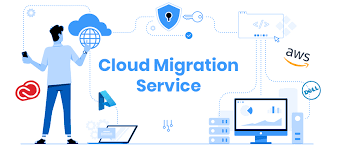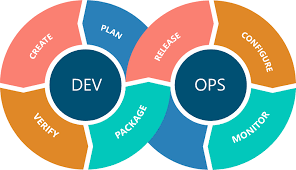IBM Cloud vs AWS: The Difference and How to Choose?

In today’s digital age, the cloud has become an indispensable tool for businesses of all sizes. It offers scalability, flexibility, and cost-effectiveness in managing data and applications. Among the top players in the cloud computing market are IBM Cloud and Amazon Web Services (AWS). Both platforms provide a wide range of services and features, but understanding the differences between them is crucial for businesses looking to migrate to the cloud.
In this comprehensive guide, we will explore the disparities between IBM Cloud and AWS, comparing factors such as cost, features, pros, and cons, to help you make an informed decision.
IBM Cloud vs AWS: An Overview
Before delving into the specifics, let’s start with a brief overview of Amazon Web Services vs IBM Cloud:
IBM Cloud:
IBM Cloud is a suite of cloud computing services offered by IBM, a renowned technology company with a long history in enterprise computing. It provides a diverse range of services, including infrastructure as a service (IaaS), platform as a service (PaaS), and software as a service (SaaS). IBM Cloud is known for its enterprise-grade security features, global reach, and support for hybrid cloud environments.
AWS (Amazon Web Services):
AWS is the cloud computing arm of Amazon.com, Inc., the world’s largest online retailer. Launched in 2006, AWS has grown to become the leading cloud services provider, offering a vast array of infrastructure services, storage solutions, and developer tools. AWS is known for its extensive global infrastructure, high availability, and scalability.
IBM Cloud vs AWS Cloud: A Detailed Comparison
Cost Comparison:
IBM Cloud and AWS Cloud present distinct pricing models tailored to meet diverse business needs. IBM Cloud features a flexible pricing framework encompassing pay-as-you-go alternatives and reserved instances to accommodate predictable workloads. Conversely, AWS adheres to a comparable pay-as-you-go model, offering multiple pricing tiers reflective of resource consumption.
Moreover, AWS extends cost-saving avenues including reserved instances, spot instances, and savings plans for prolonged commitments. Although both IBM Cloud and AWS offer competitive pricing structures, the final cost is contingent upon workload specifics and chosen pricing alternatives, highlighting the comparison of IBM Cloud vs AWS Cloud.
Features and Services:
IBM Cloud Vs Amazon AWS encompass a diverse array of services spanning compute, storage, networking, databases, AI/ML, IoT, and blockchain. IBM Cloud further provides tailored solutions for sectors such as healthcare, finance, and retail. Meanwhile, AWS showcases a comprehensive portfolio exceeding 200 services, encompassing compute, storage, databases, machine learning, analytics, and additional offerings alongside an extensive suite of developer tools, management solutions, and global infrastructure.
While both platforms present a wealth of services, the selection between IBM Cloud and Amazon AWS may hinge on particular necessities such as industry-specific requirements or seamless integration with pre-existing systems.
Performance and Reliability:
IBM Cloud emphasizes reliability and security, with data centers located in strategic locations worldwide. It offers high availability, disaster recovery options, and compliance with industry standards. AWS is renowned for its global infrastructure, with data centers spread across regions and availability zones for redundancy.
It provides industry-leading uptime, low latency, and advanced networking capabilities. Both IBM Cloud and AWS prioritize performance and reliability, ensuring businesses can operate seamlessly and scale their operations as needed.
Pros and Cons:
IBM Cloud Pros and Cons include robust enterprise security measures, compliance adherence, and provisions for hybrid cloud setups, coupled with tailored industry solutions. Nevertheless, it contends with limitations such as a narrower service spectrum relative to AWS, a steeper learning curve for novices, and a comparatively smaller market presence.
Conversely, AWS offers an expansive array of services, global infrastructure ensuring high availability, and a thriving developer community. Nonetheless, it grapples with complexities inherent in its pricing structure, susceptibility to cost escalations sans diligent oversight, and constraints in customization options for select services, spotlighting the comparison of IBM Cloud vs AWS Cost.
How to Choose Between IBM Cloud and AWS
- Assess your specific requirements, including workload type, scalability needs, and compliance requirements.
- Evaluate the cost implications of each platform based on your usage patterns and long-term commitments.
- Consider factors such as security, reliability, and industry specialization.
- Take advantage of trial periods, free tiers, and consultations offered by both providers to test their services and gather insights.
- Seek guidance from cloud experts, consultants, or peers who have experience with both platforms.
Conclusion
In conclusion, choosing between IBM Cloud and AWS is a significant decision that can impact the efficiency, scalability, and security of your business operations. By understanding the differences between these two leading cloud platforms and considering factors such as cost, features, and reliability, you can make an informed choice that aligns with your organization’s goals and requirements.
Whether you opt for IBM Cloud’s enterprise-grade security or AWS’s extensive service catalog, both platforms offer the flexibility and scalability to support your digital transformation journey.
FAQs:
Q1: Which is cheaper, IBM Cloud or AWS?
The cost comparison between IBM Cloud and AWS depends on various factors, including usage patterns, service selection, and pricing options. It’s recommended to analyze your specific requirements and compare the pricing models offered by both providers to determine the most cost-effective option for your business.
Q2: What are the key differences between IBM Cloud and AWS?
IBM Cloud and AWS differ in terms of service offerings, pricing structure, global infrastructure, and industry specialization. While IBM Cloud may appeal to enterprises with a focus on security and compliance, AWS offers a broader range of services and a larger ecosystem of developers and partners.
Q3: Can I use both IBM Cloud and AWS together?
Yes, many businesses adopt a multi-cloud strategy, leveraging different cloud providers for specific workloads or to avoid vendor lock-in. Both IBM Cloud and AWS offer interoperability and integration options, allowing organizations to deploy hybrid or multi-cloud architectures seamlessly.
Q4: What level of customer support can I expect from IBM Cloud and AWS?
Both IBM Cloud and AWS offer varying levels of customer support, ranging from self-service resources to dedicated support plans with 24/7 assistance. IBM Cloud provides personalized support options tailored to enterprise needs, while AWS offers a wide range of support plans, including basic, developer, business, and enterprise tiers, with options for technical account managers and proactive guidance.
It’s essential to evaluate your support requirements and choose a plan that aligns with your business needs and budget.


















































